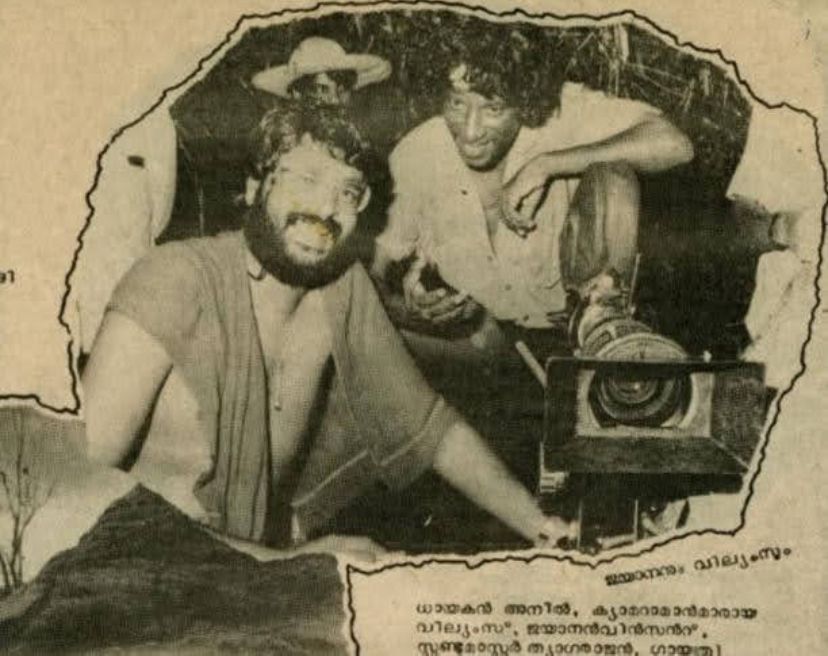
Centurion Jayanan Vincent : part 3!
Feb 13 2024
Jayanan Vincent cinema career as DOP is outstanding achievement having crossed 100 films and gone through ages of film making.
His visual journey Part 3 in conversation with SICA continues.
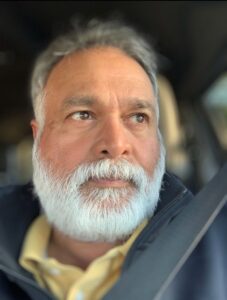
7. ‘Douthyam’ had forest adventure which had lot of action sequences that had stunning cinematography. How did you pull it off without major rigs available during that period?
I was basking under the success of ‘New Delhi’. Watching your successful movie with an audience gives you an eternal high, like a shot of adrenaline. It was during that time this exciting project ‘Douthyam’ landed in my lap.

Director Anil and I have been friends since we met on the sets of a Malayalam feature ‘Ivar’ at Quilon in 1979. He assisted director I. V. Sasi. He was quite unassuming, unpretentious and soft spoken. And oh, he was a connoisseur of perfumes and colognes. Jokes apart, he was a serious filmmaker like his guru.
The story writer of ‘Douthyam’, Gayathri Ashokan was also known to me. He was a poster designer for most of our movies and a regular visitor to writer Dennis Joseph’s room. Anil and Gayathri Ashokan met me for a detailed narration. I was pleasantly surprised that Ashokan carried just a handful of foolscap papers instead of a bulky folder. As he began narrating the script to me, I realized there was very little dialogue, more action, thrills and adventure and totally dependent on a visual presentation.
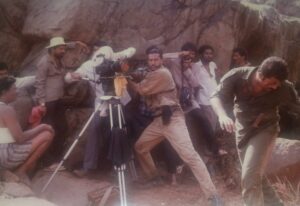
My mind went scampering in different directions. I was very excited and super amped. How often would one get an opportunity to do movies like this. And more surprised that Mohanlal nodded yes to play the protagonist. Earlier, Mohanlal had bankrolled a Malayalam feature, ‘Adiverukal’ with his partner, Century Kochumon. It was Anil’s directorial debut and I was the cinematographer of yet another forest based movie extensively shot in Tenmala and surroundings.

Athirapally was picked as the primary location for its gorgeous waterfalls, bamboo groves, thick moist forests and abundant streams. Also the proximity to transport the Cessna aircraft from an old flight school in Chalakudi for the plane crash scene.
Eastman Kodak was our choice of negative. Luckily, Kodak had launched a high speed daylight negative 5297 EI 250, a year or two ago. It was an ideal stock for filming under the canopy of the trees in the dense forest. We decided to film with two Arriflex IIC BV cameras, Kowa Anamorphic primes and a Cooke Varotal 40 – 200mm zoom lens.
By this time, I made sure Jubilee Cine Unit had an assortment of HMI lights (2.5kW, 1.2kW & 575W) and a couple of portable generators. We had fog machines, rain machines and water pumps too. We knew we had a formidable task ahead co-ordinating local manpower to haul heavy ballasts, tracks & an old-school doorway dolly and lights down a steep slope to the base of the waterfalls. (Currently, there are steps leading to base of the waterfalls)
The heavy outer shell of the Cessna airplane had pulleys installed on the cockpit and top of the tail. Action director, Thyagarajan had steel cables in the pulleys and hauled the airplane between tall trees at an incline to create the crash. The cables were cleverly camouflaged. It was a Herculean task to haul the airplane 30 feet off ground level. We had all hands on deck for that shot. The ensuing shots captured were amazing depicting a perfect crashing airplane amidst the trees.
The super wide shots of the airplane losing control in the heavily clouded skies were filmed on a table top miniature in Arunachalam Studios, Madras. Art Director, Radhakrishnan created an extraordinary miniature of the hillocks and valleys. My father’s expertise was sought to film the sequence on a high speed Mitchell camera. He knew the perfect lensing and frame rate based on the size of the miniature. I believe we lit up for a T8 or T11 to create depth of field.
Art director Radhakrishnan also did some amazing matte painting to camouflage a roadway beside the waterfalls. We had a Mitchell camera in a darkened tent with the 4’x4’ clear glass at RK’s disposal and he painted huge boulders and rocks with live creepers and plants. He was a true artist. The matte painting was strongly lit with HMI’s to match the exterior exposure on the waterfalls.
It was at the same location that our focus puller, Ayyappan lost his footing on a slippery boulder and slid into the water with the camera. Everyone was shell shocked. We had just filmed a treacherous maneuver. Once the camera was retrieved, the process to assess the damage began. Water had found its way into the 400’ magazine. The loading bag was brought in and the exposed negative unloaded. The loader noticed that the exposed negative was wet. I suggested that we fill some water in the black plastic bag, place the exposed film in it and transport the can ASAP to the lab with instructions. Had we not added the water, the emulsions once dry would have stuck to the base and peeled off. Days later, we heard from the lab that the footage looked great.
Go with your instinct, it could save your day. As my father always said, “Don’t waver in your decision. Make a decision whether right or wrong, just make it.” True to his advice, I followed it.
Cinematographer/Director J. Williams was roped in for the second schedule. I happened to view the footage he shot for Malayalam’s first 70mm movie ‘Padayottam’. He filmed a few mesmerizing bird’s eye view shots of the dhow in mid seas. Williams was literally strapped at the feet and hauled upside down with a handheld Arri camera to film these shots. I thought it’d be cool to do some shots like that in the forest and so the choice. Thankfully Williams obliged and he pulled off some incredible shots in ‘Douthyam’. Williams and I had mutual respect for each other and we were friends till his untimely death.
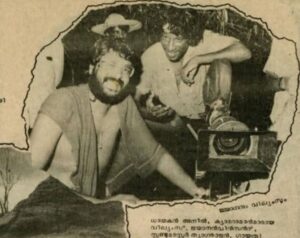
Another sequence that needed special mention was a night scene of Mohanlal and the military personnel stealthily crossing a fast flowing river. Entry to this designated part of the river was restricted by authorities due to multiple deaths. The currents were strong and merciless. We decided to capture one wide shot in late dusk to show the majestic river, the dark blue sky and the dense forests in the back drop. The other two cameras captured different angles so we could have as many dusk shots as possible. The mid shots and close ups were planned after nightfall. The Mitchell camera was mounted with a Todd AO lens for the wide shot. I had a clear Belgian glass on the matte box with an oblong black chart masking the area of crossing and exposed about 100 feet considering a few retakes. After nightfall, the black chart was removed, rewound 100 feet, lit up the actors crossing the river and exposed the shot again. The darkness served as a mask to the pre-exposed backdrop. It was a simple masking/double exposure technique and the ensuing shot looked amazing. The Mitchell camera served us well on this adventurous feature.
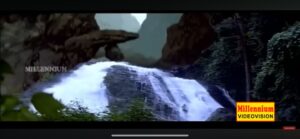

For the bamboo grove shots amidst the rapid streams, we resorted to inflated truck tyre tubes with wooden planks. The hi-hat was installed on the planks to stabilize the camera and we pulled off some improvised tracking shots.
We also filmed with an Arriflex III at Hogenakkal for the climax fight between the protagonist and antagonist. We captured a lot of 100 fps shots on the antagonist’s death under crystal clear waters. The movie was a failure at the box office but the fruit of our labour was recognized by the film fraternity.
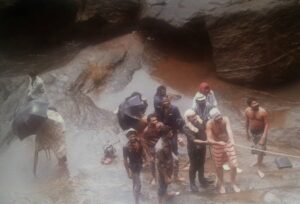
Director Anil was signed up by a Telugu production, Pallavi Purna Pictures to direct the remake of ‘Douthyam’. I was happy for him but he was perplexed. The reason being one of the producers was senior Telugu cinematographer, S. Venkatrathnam. The other was Director Jagapathi Rajendra Prasad.
A few days later, I was called for a meet with S. Venkatrathnam. He applauded my work in the movie and
surprised me when he mentioned that I would be the cinematographer for the remake. In all his productions to date, he was the cinematographer. It was the first time he hired another cinematographer for this remake and it did raise a few eyebrows. It was Jagapathi Babu’s second feature and the debut of Aishwarya, legendary actress Lakshmi’s daughter.
‘Adavilo Abhimanyudu’ bagged two Nandi awards for best screenplay & a special jury award for Jagapathi Babu.
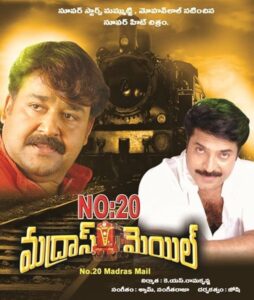
8. No. 20 Madras Mail was shot mostly on a train can you brief about your approach towards visuals.
No. 20 Madras Mail was yet another challenging movie to execute. Like I mentioned before, Dennis Joseph had this penchant for weaving unusual and unique stories. And this time around it was in a moving train. After the ‘Burning Train’ fiasco, Southern Railways were very reluctant to allow any kind of filming on their trains.
We contemplated filming on sets with back projection and that meant we had to expose a good lot of background plates. It didn’t sound too feasible at that time so huge security deposits were paid to Southern Railways and finally filming permits were granted.
When filming began in Madras Central station, writer Dennis Joseph had just seven or eight scenes. It was a script under construction. Scenes were despatched every morning before the shoot. So lighting & camera gear had to be chopped and changed at short notice. In terms of a visual, we decided to veer away from anamorphic to widescreen 35mm. We wanted that closed space ‘claustrophobic’ look. 18mm lens was randomly used in the train scenes. We stuck to 28mm for the wide shots and resorted to a good lot of pan shots.
Southern Railways allotted the Shoranur – Nilambur route for the live train shoots. It was decided to film the interiors of the First Class cabins first before we filmed the exterior shots. We requested the railway liaison officer to organize two brake wagons on either side of the first class bogies to load an 18kW generator, grip and lighting. Wardrobe and miscellaneous articles in the other wagon.
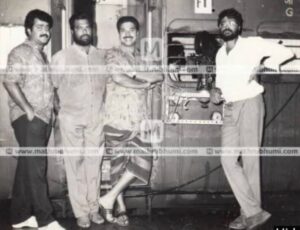
We preferred the first class cabins beside either door as we had the vacuum grip attached outside the window and wanted easy access to view the frame at will. The distance between the electric post and the carriage was precisely measured before we even set the vacuum grip. It would have been disastrous, had we not pre-planned. Can you imagine we even panned the camera on the vacuum grip for the moving train shots, by dangling out the door. The friction head was marked with glass marking pencils during the static rehearsals and executed to the T during filming. There was no way I could view the scene through the viewfinder during these maneuvers. Just a part visual through the window. The basic lighting units inside the cabin was 1.2kW & 575W HMI lamps either bounced off styrofoam boards or through a Rosco #216 for the day scenes and tungsten for the night scenes.
We also had the Panther Dolly for the tracking shots in the vestibule. For the night scenes, we side lit the moving backgrounds with a 2.5kW HMI and punched multiple units of 2kW Juniors through the windows from either cabins as a source for the background. Luckily, we had access to Director Joshi’s walkie talkie sets to communicate with the guard and driver of the train in regard to the speed and multiple stops enroute the Shoranur – Nilambur stations.
For some dusk shots, we practically taped gateway tracing sheets on the windows of every coach and lit it with open face 1k Halogen lights with the two 18k portable generators installed in the guard carriage and brake wagon to power up the lights. It was literally a maze of cables running all over the train and a tremendous challenge to coordinate and film in the magical minutes at dusk.
Late cinematographer Anandakuttan was called in as a guest cameraman to film the climax action scenes and an upcoming cinematographer, at that time, Santosh Sivan obliged filming a song on sets in AVM studios and a few scenes when I was tied up with other projects. It was writer Dennis Joseph who strongly recommended Santosh to be the guest cinematographer for No. 20 Madras Mail. I knew him and had also worked as a guest cinematographer for his Malayalam movie, ‘David, David, Mr. David’ around the same time.
It was a Herculean task to make road trips to film all the major stations from Trivandrum to Erode and Salem to capture the exterior of the railway stations and exterior passing shots of the actual No. 20 Madras Mail. And finally the interior and exterior shots of the Madras Central Station.
The end result was rewarding. The movie turned out to be a box office hit and a hilarious scene between the superstars Mammootty and Mohanlal the most watched scene on YouTube.
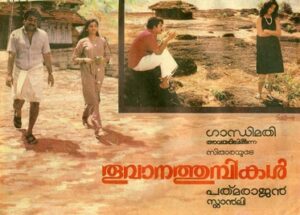
9. Films like ‘Thoovana Thumbikal’ and ‘Shyama’ had realism and memorable visuals.
‘Thoovana Thumbigal’ was produced by P. Stanley. Stanley uncle as we called him was an associate director for many of the Malayalam features my father directed. I’ve known him since I was a kid. He was a regular visitor at our house. Initially, he planned to direct a feature based on a Malayalam short story, ‘Priyapetta George Thomas”. He cast Mohanlal as the protagonist and Suhasini as his lady love. Unfortunately that project fell through for reasons unknown. And thus those dates made way for P. Padmarajan’s, ‘Thoovana Thumbigal’. Cinematographer Venu was the regular for P. Padmarajan at that time. Since I was originally signed up, they decided not to discard me. It was my one and only movie with Padmarajan as a director. I knew him fairly well as he was the writer of the 1984 Malayalam movie, ‘Kaanamarayathu’ which I. V. Sasi had directed. He was a prolific writer with great command of the language. He had a magnetic personality and his narration of the script was mesmerizing. It was a unique story of of young village bumpkin caught in the web of love and lust. A subject quite taboo and rarely attempted. Rain played a crucial role in creating some magical moments when the lovers met.
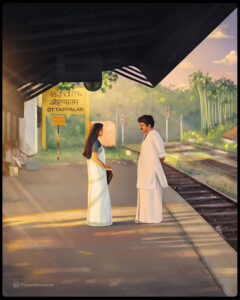
It was yet another movie to be filmed in the widescreen 35mm format. I decided to go with soft lighting for day interiors in the hotel and strong backlights to accentuate the rain. For some of the night scenes between Jayakrishnan and Clara, we decided a warm glow with full CTO’s on the tungsten lights and diffused HMI backlight with a quarter CTO. I also used a homemade fog filter for a desirable look. I created the fog filter using my father’s technique on a 4” square Belgian clear glass. The modus operandi is to apply petroleum jelly (Vaseline) lightly on the base of the palm and dab the clear glass filter gently to form an imprint and repeated till the clear glass was fully coated with imprints. The other option was the touch up cloth used, back in the day, to create the imprints. Crude as it may sound, the technique worked. It looked more like the present day SoftFX filters.
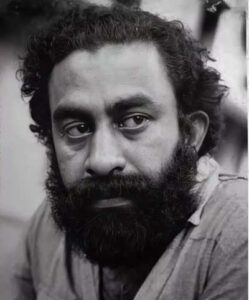
Production of ‘Thoovana Thumbigal’ was delayed due to unforeseen circumstances and I was forced to entrust the baton to my younger brother, cinematographer Ajayan Vincent. ‘Nair Saab’ was my next commitment in Kashmir and no chance to wrangle more days to complete ‘Thoovana Thumbigal’. Ajayan and I followed the same school of lighting and thought so there wasn’t a stark difference in visuals. I guess Ajayan, too, had some fond memories of ‘Thoovana Thumbigal’ as he found his life partner during the course of the movie. Though, I was not credited for the movie it still remains one of my favourites.
‘Thoovana Thumbigal’ was a disaster at the box office. Critics praised the writing, songs, performances and the movie in general but nothing could prop the movie and draw the audience into the theatres. Decades later, ‘Thoovana Thumbigal’ became a cult classic especially amongst the younger folks. The Jayakrishnan – Clara theme composed by Johnson is still loved and adored.
There was no love lost between Pappettan and I for abandoning the project. I remember he called me over to Adayar Gate hotel one evening for a meeting. We exchanged pleasantries and in walked an unexpected guest, Kamal Hassan. They were planning to remake ‘Nammukku Parkkan Munthirithoppukal’ in Tamil. Everyone was elated and enthusiastic, at that moment, but as days and years rolled by, the hope of a remake diminished. Again, I had the opportunity to work on a Padmarajan script, ‘Ee Thanutha Velupankalathu’ directed by Joshi in 1990. The script narration happened at Pappettan’s apartment in Trivandrum. It was probably the last time I saw him.
Padmarajan suffered a massive cardiac arrest and passed away in Calicut.
‘Shyama’ came on the heels of ‘Nirakkoottu’. An abrupt cancellation of a project prompted Joshi and Dennis Joseph to scramble for a story in a short span of time. In a matter of days, ‘Shyama’ took shape. Kodaikanal was the location. Since ‘Thrishna’ in 1981, I had done many projects in Kodaikanal and was well versed with the most ideal and picturesque locales in the region. ‘Shyama’ was a romantic thriller with an unexpected twist in the flashback episode.
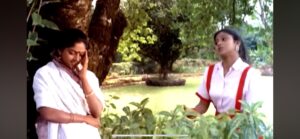
In terms of a visual in Kodaikanal, we stuck to a natural soft light look for the day interiors in the bungalow of the protagonist. We had a few 9 light Minibrutes (daylight balanced) diffused with tracing paper clipped on the barndoors. For a better punch, we cut a hole in the center of the paper to reveal one bulb, so we had a strong light falling on the talent and soft diffused light all around. It was a challenge to work with the minibrutes, back in the day. The dichroic bulbs of the minibrutes burned out at regular intervals and the rental companies always ran short of spare bulbs. And also we had some horrendous daylight conversion filters on the open face 2000W & 1000W halogen lights. These so called daylight conversion filters varied in colour like we had all weird shades of blue ranging from dark to light. No two filters were alike. Cinematographers of that era will know exactly what I mean. I’m so glad the Arri HMI’s and Skypanels have become the staple lighting units now.

We had a mixed bag of lighting for the dusk shots and night interiors. Cool light for the exteriors lit by minibrutes and the interiors lit by tungsten lights. I used 2kW Juniors and 500W Baby Lights combined with a 1000W halogen bounced off a 4’x4’ styrofoam or 4’x4’ plywood bounce board painted white.
Surprisingly, one morning, we had heavy fog cover before filming a crucial scene. We were perplexed. Writer Dennis and director Joshi intelligently improvised the scene accordingly to include the misty look. The next challenge was to film the scene quickly before the fog dissipated. We used the 9 light Minibrutes as fill lights for the talent to compensate for the whitish veil.
A fortnight into the schedule we had a setback. We couldn’t find a suitable actor to play the boyfriend of Shyama. Talks were on to find either a new face or an established actor from other languages. Out of the blue, writer Dennis Joseph requested me to play the role. He even talked director Joshi into it. I freaked out. I pleaded with them to drop me out of the selection. Acting was not my cup of tea. I’m happier behind rather than the front of the camera. Finally, the onus fell on Mukesh to play the role and he performed it to perfection.
For one of the songs filmed in Munnar, we resorted to some on-camera special effects like simple mask shots. Masking shots were always done on a Mitchell camera but this time around I tried it with an Arriflex III. The weather conditions in any hill resort was unpredictable but we were lucky sunlight favoured us. The shots turned out well.
‘Shyama’ became a box office hit and the songs written by lyricist Shibu Chakravarthy a super hit. The movie was later remade in Tamil.
SICA is very much thankful for Jayanan Vincent for his detailed sharing about the behind the scenes of his illustrious career.
Article by
CJ Rajkumar
Author / Cinematographer
